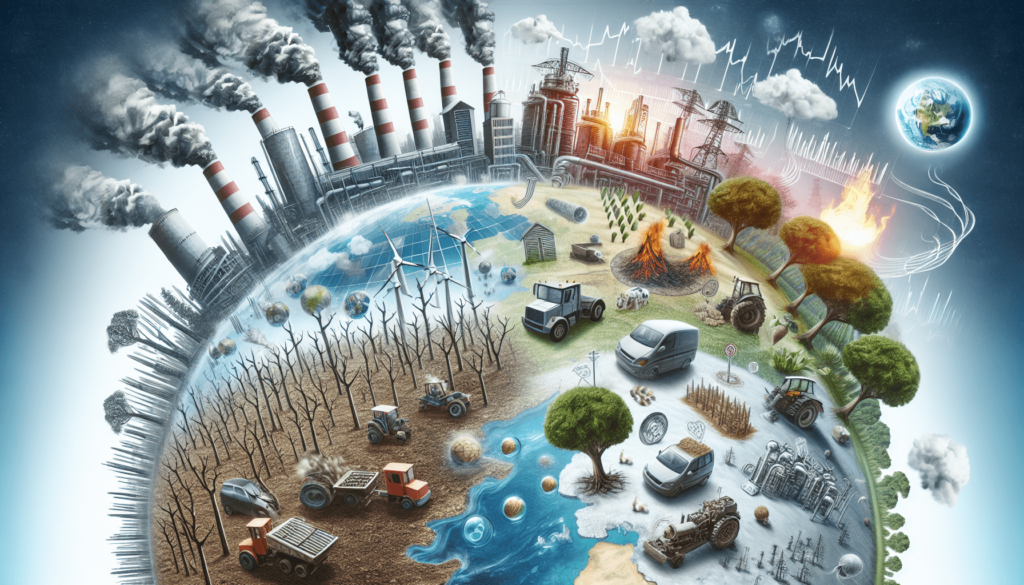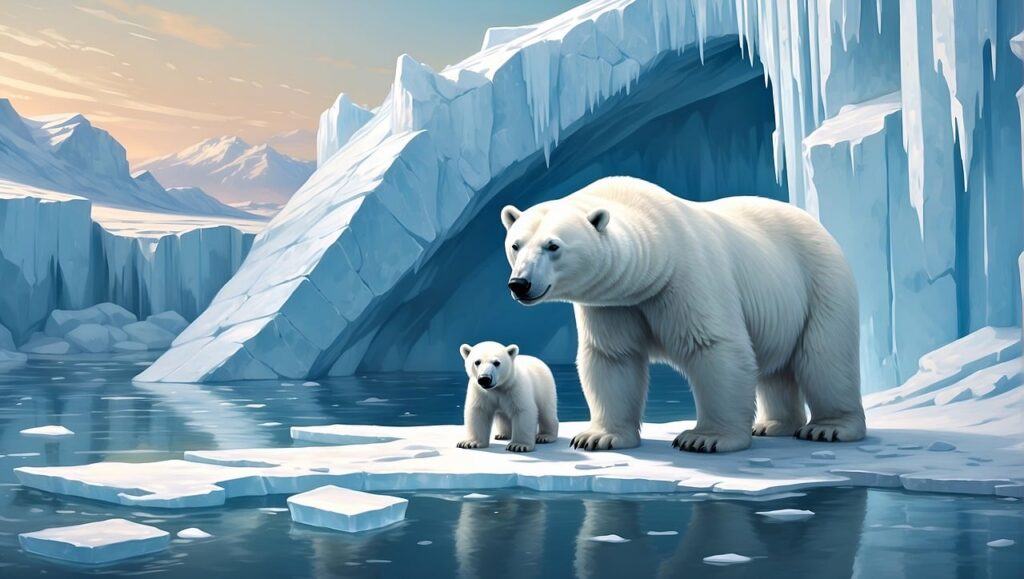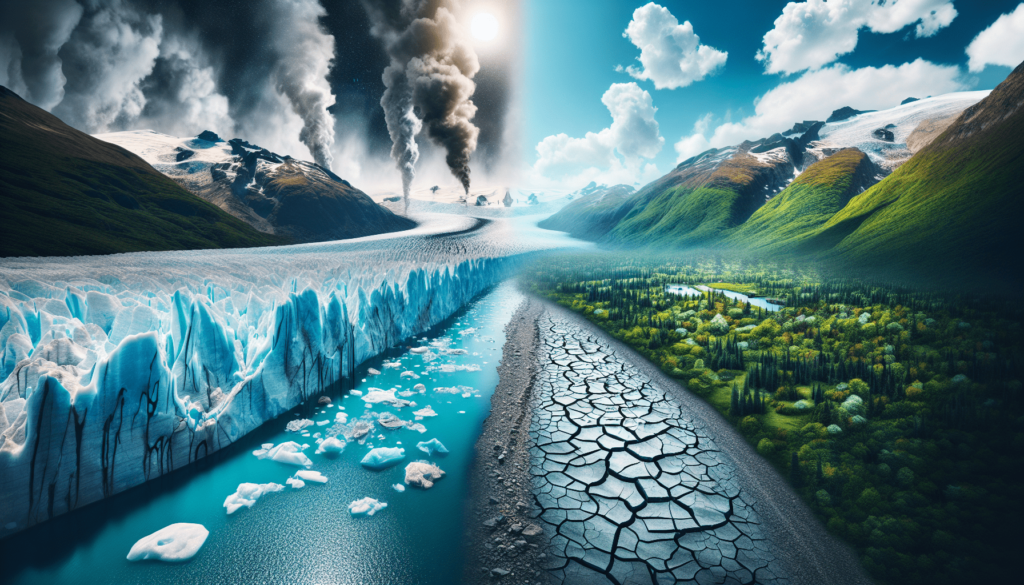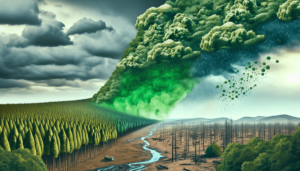In this article, we will explore the fascinating subject of climate change and uncover the various factors that contribute to its occurrence. From natural occurrences to human activities, we will delve into the intricate web of causes behind this global phenomenon. By gaining a deeper understanding of what drives climate change, we can all play a part in mitigating its effects and moving towards a more sustainable future. So, let’s embark on this informative journey and unravel the intricacies of what truly causes climate change. Climate change is a complex phenomenon that is caused by a combination of natural and human factors. In this article, we will explore the various factors that contribute to climate change and delve into the impact they have on our planet. By understanding these factors, we can work towards finding solutions to mitigate the effects of climate change and ensure a sustainable future for generations to come.

1. Natural Factors
Solar Energy
Solar energy plays a fundamental role in our climate system. The Earth receives heat and light from the Sun, which warms the atmosphere and the surface of the planet. This energy drives various atmospheric processes, such as wind patterns, cloud formation, and precipitation. Changes in solar radiation can have a direct impact on our climate, leading to fluctuations in temperature and weather patterns.
What Causes Climate Change?
Volcanic Activity
Volcanic eruptions release large amounts of gases and particles into the atmosphere. These emissions include carbon dioxide (CO2), sulfur dioxide (SO2), and ash. Volcanic gases can contribute to the greenhouse effect and warming of the planet. Additionally, volcanic ash can reflect sunlight back into space, leading to a cooling effect. While volcanic activity can have both warming and cooling effects on climate, the overall impact depends on the magnitude and frequency of eruptions.
Orbital Variations
The Earth’s orbit around the Sun is not perfectly circular, but rather elliptical. As a result, the distance between the Earth and the Sun varies over time. This phenomenon, known as orbital variations or Milankovitch cycles, can influence climate. Changes in the Earth’s orbit affect the amount and distribution of solar radiation reaching the planet, leading to long-term climate changes. These natural variations occur over thousands of years and are thought to be responsible for the ice age cycles.
2. Human Activities
Burning Fossil Fuels
The burning of fossil fuels such as coal, oil, and natural gas releases significant amounts of greenhouse gases into the atmosphere. The primary greenhouse gas emitted through these activities is carbon dioxide (CO2). These emissions trap heat in the Earth’s atmosphere, leading to an increase in global temperatures. The use of fossil fuels for transportation, electricity generation, and industrial processes contributes greatly to human-induced climate change.
Deforestation
Deforestation, the clearing of forests for agriculture, urbanization, and logging, is another major contributor to climate change. Forests act as carbon sinks, absorbing carbon dioxide from the atmosphere through photosynthesis. When forests are cut down or burned, the stored carbon is released back into the atmosphere as CO2. Deforestation not only reduces the Earth’s capacity to absorb carbon dioxide but also contributes to the loss of biodiversity and disruption of ecosystems.
Agriculture
Agricultural practices, particularly large-scale farming and livestock production, also play a significant role in climate change. The use of synthetic fertilizers and the disposal of animal waste release potent greenhouse gases, such as methane (CH4) and nitrous oxide (N2O). Methane is produced by ruminant animals, such as cows, during digestion, while nitrous oxide is released through the use of nitrogen-based fertilizers. These emissions contribute to the warming of the planet and the depletion of the ozone layer.
Industrial Processes
Industrial processes, including manufacturing, chemical production, and mining, emit greenhouse gases and other pollutants into the atmosphere. These activities release carbon dioxide, methane, and various other harmful substances that contribute to climate change. Additionally, the production and use of ozone-depleting substances, such as chlorofluorocarbons (CFCs), exacerbate the greenhouse effect and contribute to the degradation of the ozone layer.
Waste Generation
The improper management of waste, particularly in landfills, leads to the release of methane and carbon dioxide into the atmosphere. As organic materials decompose in landfills, they produce methane, a potent greenhouse gas. Inefficient waste management practices exacerbate this issue and contribute to the overall emissions of greenhouse gases. Reducing waste generation and implementing proper waste management strategies are crucial steps in mitigating climate change.

3. Greenhouse Effect
Role of Greenhouse Gases
The greenhouse effect is a natural process that helps regulate the Earth’s temperature. Greenhouse gases, such as carbon dioxide, methane, and water vapor, trap heat in the atmosphere, acting like a blanket around the planet. This natural phenomenon is essential for maintaining a habitable climate on Earth. However, human activities have significantly increased the concentration of greenhouse gases, leading to an enhanced greenhouse effect.
Enhanced Greenhouse Effect
The enhanced greenhouse effect refers to the additional warming of the Earth’s surface caused by human-induced greenhouse gas emissions. The excess greenhouse gases trap more heat in the atmosphere, resulting in a rise in global temperatures. This increase in temperature has far-reaching consequences for our planet, including rising sea levels, more frequent and severe heatwaves, changes in precipitation patterns, and increased intensity of storms and hurricanes.
4. Global Warming
Increased Greenhouse Gas Emissions
The increased emissions of greenhouse gases from human activities are the primary driver of global warming. The burning of fossil fuels, deforestation, and industrial processes release substantial amounts of carbon dioxide into the atmosphere. Methane emissions from agriculture, landfills, and natural gas production also contribute to global warming. As these greenhouse gases accumulate in the atmosphere, they trap more heat, leading to a steady increase in global temperatures.
Impact of Human Activities
The impact of human activities on global warming extends beyond the rise in temperatures. Climate change affects various aspects of our planet, including ecosystems, water resources, agriculture, and human health. Rising sea levels threaten coastal communities, while changes in precipitation patterns affect water availability and agriculture. Extreme weather events, such as hurricanes and droughts, become more frequent and intense, posing significant risks to human lives and infrastructure.

5. Oceanic Factors
Thermohaline Circulation
The thermohaline circulation, also known as the ocean conveyor belt, plays a crucial role in climate regulation. This global pattern of ocean currents transports heat from the equator to the polar regions, influencing regional climates. Changes in the thermohaline circulation can disrupt this process, leading to shifts in temperature and precipitation patterns. The melting of polar ice caps and the influx of freshwater into the oceans can alter the density and salinity of water, impacting the thermohaline circulation.
Ocean Currents
Ocean currents, driven by various factors such as wind, temperature, and salinity, play a significant role in climate. These currents transport heat from one region to another, influencing local climates and weather patterns. Changes in ocean currents can have wide-ranging effects, including the redistribution of heat, the melting of sea ice, and alterations in marine ecosystems. The warming of ocean waters also contributes to the expansion of seawater, leading to rising sea levels.
Ocean Acidification
Another consequence of climate change is ocean acidification. The excessive absorption of carbon dioxide by the oceans leads to a decrease in pH levels, making the water more acidic. This process has devastating effects on marine life, particularly on corals, shellfish, and other organisms that rely on calcium carbonate for their shells and skeletons. Ocean acidification can disrupt the balance of ecosystems, leading to the loss of biodiversity and the collapse of fisheries.
6. Land Use Changes
Urbanization
The rapid growth of urban areas and the expansion of cities contribute to climate change. Urbanization leads to increased energy consumption, as more buildings require heating, cooling, and electricity. The construction of infrastructure and the use of concrete contribute to the emission of carbon dioxide. Additionally, urban heat islands, where cities experience higher temperatures compared to surrounding rural areas, exacerbate the warming effect of climate change.
Agricultural Practices
Agricultural practices, such as intensive farming and the use of chemical fertilizers, have a significant impact on climate change. The production of synthetic fertilizers, made from fossil fuels, releases greenhouse gases during the manufacturing process. The use of these fertilizers also leads to the release of nitrous oxide, a potent greenhouse gas. Moreover, the conversion of land for agriculture contributes to deforestation and the loss of carbon sinks.
Deforestation
Deforestation plays a dual role in climate change. The clearing of forests releases carbon dioxide into the atmosphere, contributing to the greenhouse effect. Additionally, forests act as carbon sinks, absorbing CO2 from the atmosphere and storing it in their biomass and soil. The loss of forests reduces the Earth’s capacity to absorb carbon dioxide, further exacerbating climate change. Deforestation also results in the loss of biodiversity, disruption of ecosystems, and soil erosion.

7. Loss of Biodiversity
Impact on Ecosystem Services
The loss of biodiversity has profound implications for climate change. Ecosystems, with their diverse array of plants, animals, and microorganisms, provide critical services that help regulate climate. Forests, for example, act as carbon sinks, absorbing CO2 from the atmosphere. Wetlands help purify water and store carbon, while coral reefs protect coastlines from erosion. The loss of biodiversity disrupts these ecosystem services, making it more challenging to mitigate and adapt to climate change.
Disruption of Food Chains
Biodiversity loss can also disrupt food chains and ecological interactions, resulting in imbalances within ecosystems. The extinction of species can lead to cascading effects on other organisms, affecting the stability and functioning of ecosystems. Changes in temperature, precipitation, and the availability of resources due to climate change can further exacerbate the challenges faced by species, making them more vulnerable to extinction.
Altered Atmospheric Conditions
Climate change alters atmospheric conditions, including temperature, humidity, and composition, which can impact the survival and behavior of species. Temperature changes can affect the timing of migration, reproduction, and hibernation, leading to mismatches in ecological interactions. Rising temperatures and changes in precipitation patterns can also contribute to the spread of diseases and the invasion of non-native species, further jeopardizing biodiversity.
8. Aerosols and Air Pollution
Effects of Aerosols
Aerosols are tiny particles suspended in the atmosphere, including dust, soot, and pollutants. These particles can have both cooling and warming effects on climate. Some aerosols reflect sunlight back into space, leading to a cooling effect. However, other aerosols, such as black carbon (soot), absorb sunlight and contribute to warming. The composition and concentration of aerosols play a crucial role in determining their overall impact on climate.
Air Pollutants and Climate Change
Air pollutants, such as sulfur dioxide and nitrogen oxides, emitted from industrial processes and vehicle emissions, can contribute to climate change. These pollutants react with other compounds in the atmosphere to form secondary aerosols, affecting cloud formation and properties. Changes in clouds can influence the Earth’s radiation balance, leading to further warming or cooling effects. Reducing air pollution is essential not only for human health but also for mitigating climate change.

9. Methane Release
Natural Methane Sources
Methane is a potent greenhouse gas that has a much higher warming potential than carbon dioxide. Natural sources of methane include wetlands, termites, and natural gas seepage. Wetlands, particularly those in tropical regions, release significant amounts of methane during anaerobic decomposition. While these natural sources contribute to methane emissions, human activities also play a substantial role in the release of this greenhouse gas.
Human Activities
Human activities, such as fossil fuel extraction and production, livestock farming, and the decay of organic waste in landfills, are significant sources of methane emissions. The production and distribution of natural gas, a fossil fuel composed mostly of methane, can lead to leakages and releases into the atmosphere. Additionally, enteric fermentation in livestock, particularly ruminant animals like cows, generates substantial methane emissions. Reducing methane emissions and capturing methane from waste sources are crucial in addressing climate change.
10. Feedback Loops
Positive Feedback
Positive feedback loops amplify the effects of climate change, intensifying its impacts. One example of a positive feedback loop is the melting of Arctic sea ice. As the ice melts, it exposes darker ocean waters, which absorb more sunlight and further contribute to warming. This process leads to more ice melting and an acceleration of climate change. These positive feedback loops can act as tipping points, pushing the climate system towards irreversible changes.
Negative Feedback
Negative feedback loops, on the other hand, help regulate the Earth’s climate by counteracting changes. An example of a negative feedback loop is the uptake of carbon dioxide by oceans and forests. As CO2 concentration increases, oceans absorb a portion of it, reducing its presence in the atmosphere. Forests also act as carbon sinks, absorbing CO2 through photosynthesis. These natural processes help mitigate the effects of climate change, albeit to a limited extent.
In conclusion, climate change is a multifaceted issue influenced by a range of natural and human factors. Solar energy, volcanic activity, and orbital variations shape the Earth’s climate over long timescales. However, it is human activities such as burning fossil fuels, deforestation, and industrial processes that are primarily responsible for the accelerated pace of climate change. The impacts of climate change, including rising temperatures, sea-level rise, and ecosystem disruptions, have far-reaching consequences for both the environment and human societies. By understanding the various factors contributing to climate change, we can work towards implementing sustainable practices, reducing greenhouse gas emissions, and protecting the planet for future generations.




